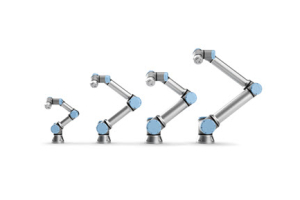The Linear Shaft Motor introduces an innovative approach to parallel drive systems by enabling the utilization of two motors in parallel with a single encoder and amplifier. This paper explores how the Linear Shaft Motor overcomes challenges associated with traditional parallel drive setups, making it a powerful solution for various high-precision applications.
Advantages of Linear Shaft Motors:
Simplified Parallel Drive Setup: Unlike conventional systems requiring multiple drives, controllers, and encoders, the Linear Shaft Motor offers the ability to drive two motors in parallel using just one encoder and amplifier. This streamlines the setup, reducing hardware complexity and cost.
Overcoming Orthogonal Alignment Issues: Orthogonal alignment, a key concern in parallel systems, is addressed by the Linear Shaft Motor. Unlike mechanical-driven systems prone to binding due to misalignment, the non-contact nature of Linear Shaft Motors eliminates mechanical binding concerns.
Sine Error Mitigation: Linear Shaft Motors minimize sine error – discrepancies in force generation caused by misalignment. Their design, incorporating a longer north-to-north magnetic pitch, significantly reduces the impact of sine error. This leads to enhanced system performance and accuracy.
Flexible Application Range: Linear Shaft Motors find applications in diverse industries, spanning from high-precision single-axis robots and material-testing equipment to Cartesian/Gantry robots and assembly operations.
Design Considerations for Parallel Linear Shaft Motor Systems:
Physical Connection of Motors: For effective operation, the forcers and shafts of Linear Shaft Motors must be coupled in a way that allows one-degree-of-freedom movement.
Motor Orientation: Both forcers should be oriented uniformly along their shafts. It's advised to align the forcer with the serial number towards the end of the shaft marked with yellow paint.
Minimizing Mounting Deviation: To mitigate loss of thrust due to sine error, the difference in mounting positions (Δx) between Linear Shaft Motors should be within specified limits.
Adequate Motor Spacing: Maintaining recommended minimum spacing (P) between parallel shafts prevents magnetic interference and shaft warping.
The Linear Shaft Motor presents an advanced solution to parallel drive challenges, offering simplified setup, precise performance, and the ability to utilize parallel systems in various industries. By using Linear Shaft Motors, engineers can achieve enhanced accuracy and efficiency in their motion control applications while reducing hardware complexity.





